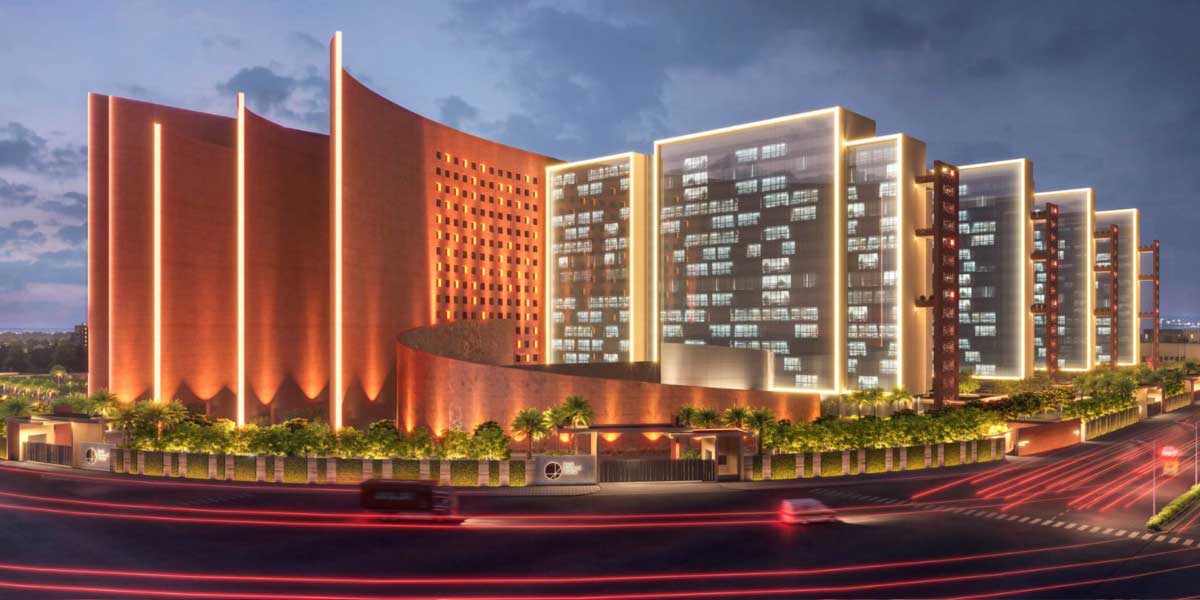Although Antwerp, Belgium, is recognized as the world's diamond market center, the majority of rough diamonds are mined in Russia or Africa. Surat, India, is a lesser-known gem hub 150 miles north of Mumbai, where 90% of the world's diamonds are cut.
The city in Gujarat state now boasts a world-class structure to house its massive industry.
Surat Diamond Bourse, which recently launched, bills itself as a "one-stop destination" for over 65,000 diamond professionals, including cutters, polishers, and traders. The vast 15-story complex has been erected across more than 35 acres of land and features a succession of nine rectangular towers pouring out from — and interconnected by — a central "spine."
According to the architects, the trading center has approximately 7.1 million square feet of floor space, making it the world's largest office structure, surpassing the Pentagon.
After four years of building, two of which were delayed by Covid-related delays, the facility is expected to welcome its first inhabitants in November. It is slated to be inaugurated later this year by Indian Prime Minister Narendra Modi, who was born in Gujarat and previously served as its chief minister.
New images obtained exclusively with CNN show the marble floors and light-filled atriums that connect over 4,700 office spaces, which may also double as mini workshops for diamond cutting and polishing. The $388 million development also includes 131 elevators, as well as cafeteria, retail, fitness, and conference facilities for employees.
Surat Diamond Bourse, according to the project's CEO, Mahesh Gadhavi, will spare thousands of individuals from going – sometimes daily – to Mumbai by train to conduct business.
Morphogenesis, an Indian architecture firm, designed the structure after winning an international design competition. Surpassing the Pentagon was not in the competition brief, according to Gadhavi. Rather, the size of the facility was determined by demand, he explained, adding that all of the offices were purchased by diamond firms before to construction.
Morphogenesis claims that its design creates a "level playing field" for both small and large firms. With offices linked by a large central corridor reminiscent of an airport terminal, residents have similarly easy access to amenities and facilities, according to the architecture firm's co-founder, Sonali Rastogi, who described the concept as "democratic."
Working there is designed "to be exactly the same for everyone," she claimed via video chat from New Delhi, adding that no office is more than seven minutes away from any of the building's access gates. (In the meantime, Gadhavi claimed that a lottery system was utilized to choose which businesses received which offices.)
Morphogenesis' studies into the Indian diamond trade also influenced the design. Rastogi drew attention to a set of nine 1.5-acre courtyards with seats and water elements that can be used as informal meeting spaces for dealers. Rastogi compared the landscaped areas to "a traditional bazaar," saying the business was driven by the fact that many informal transactions occur outside of the workplace environment.
“Email orders are probably taken inside, but human-to-human transactions are almost all outside,” she said, describing the courtyards “like public parks where we are assuming all these activities will take place.”
Surat Diamond Bourse aerial photographs demonstrate that the surrounding area is unusually low-rise for the time being. This could change if plans for a huge renovation of the 7 million-person city, called "Dream City," are realized.
The ambitious plan, which Prime Minister Modi has publicly praised, aims to develop a "smart" metropolis across about 700 hectares (1,730 acres) of south Surat. According to Gadhavi, the new diamond hub would function as a "anchor tenant" for the neighborhood. Meanwhile, Rastogi claimed that her firm is in discussions with possible clients about additional projects in the area, including a conference center.
While the architect admitted that Surat does not possess a “very remarkable architectural language of its own,” she expressed hope that sustainable design will shape the future development of a city where summer temperatures can exceed 110 degrees Fahrenheit.
Morphogenesis says that their design uses up to 50% less energy than the maximum allowed by the Indian Green Building Council to get a "platinum" rating. According to the architects, the flared shape of the central spine was designed to funnel prevailing winds through the tower, while "radiant cooling" circulates cold water beneath its floors to minimize internal temperatures.
Although individual offices will use typical air conditioning, Rastogi predicts that natural airflow will chill about half of the building, while solar energy will power common areas. “We decided to create something that is iconic, that borrows … from its context and the community we are working (with),” she added, adding its plan for the building was “based on environmental and sustainable design more than a particular architectural language.”
See also:
Saudi Arabia plans to construct world’s largest buildings at Neom
PSP Projects Receives Contract To Build SMC Twin Tower




















